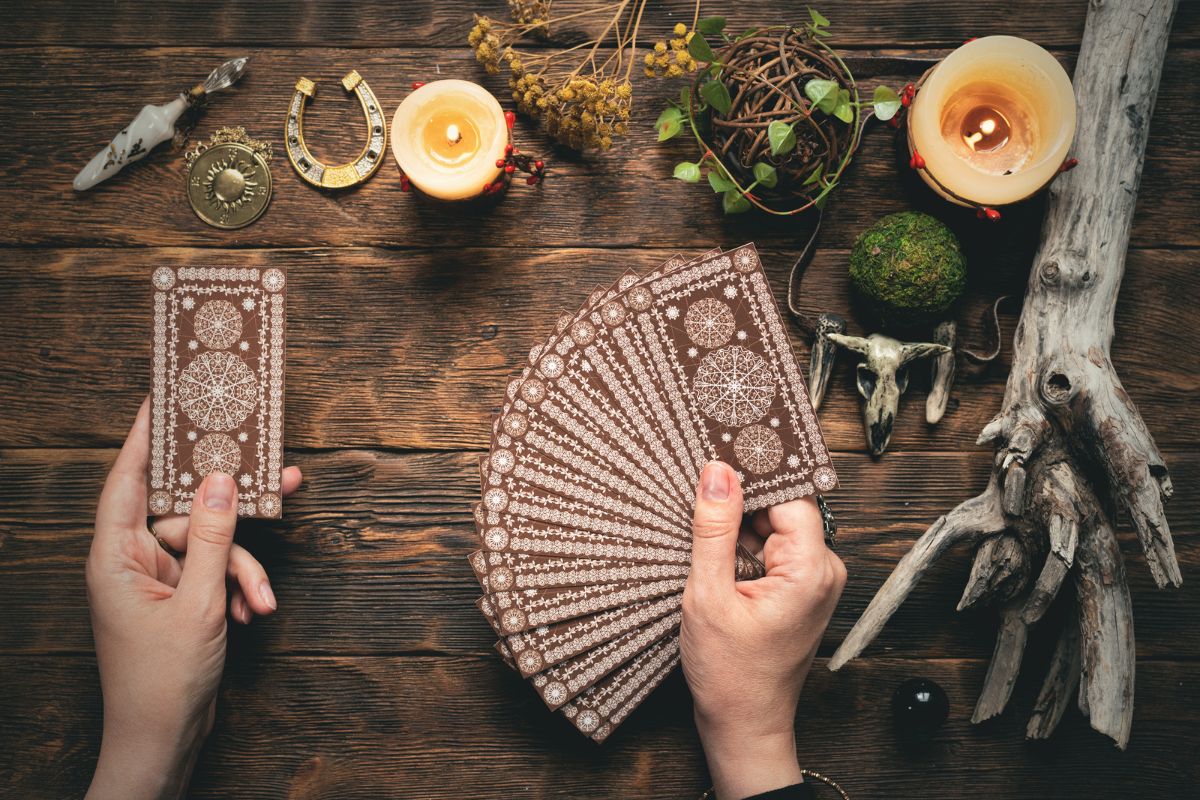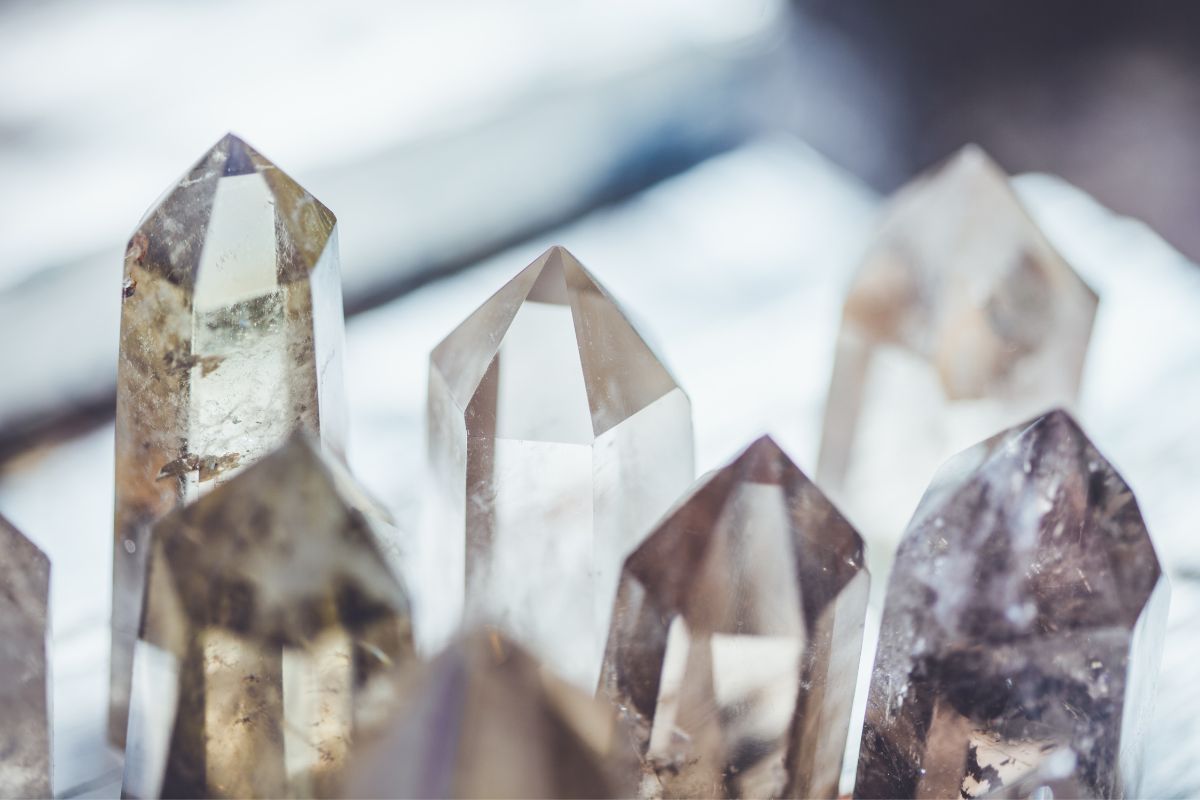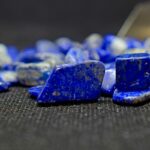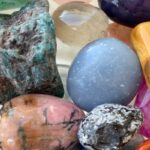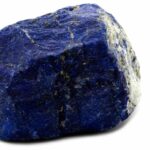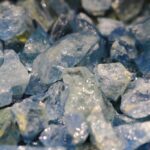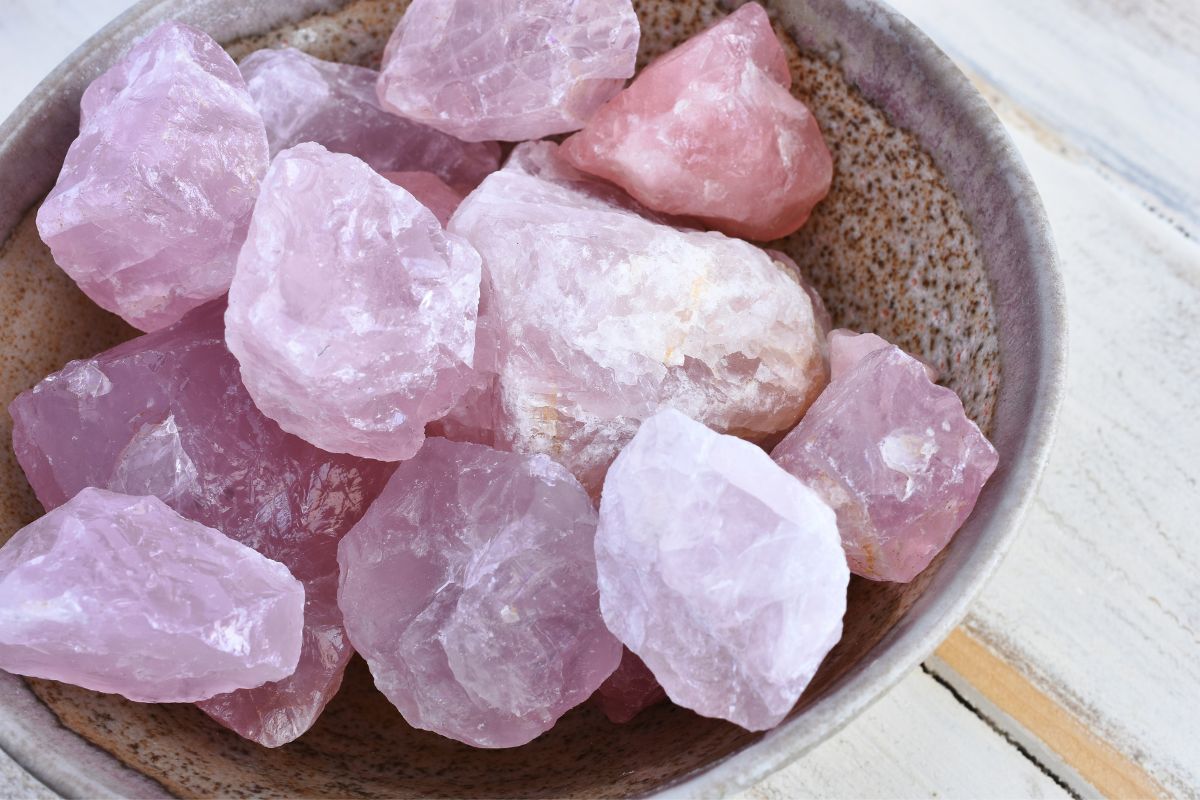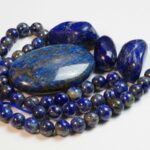Quartz is some of the most popular crystals available. Therefore, we would be remiss if we were to forget to mention some of its most popular varieties, this includes lapis lazuli and smoky quartz.
Lapis lazuli is one of the most beautiful stones out there. In fact, the famous ‘Ultramarine Blue’ of the Renaissance was composed of pieces of crushed-up lapis.
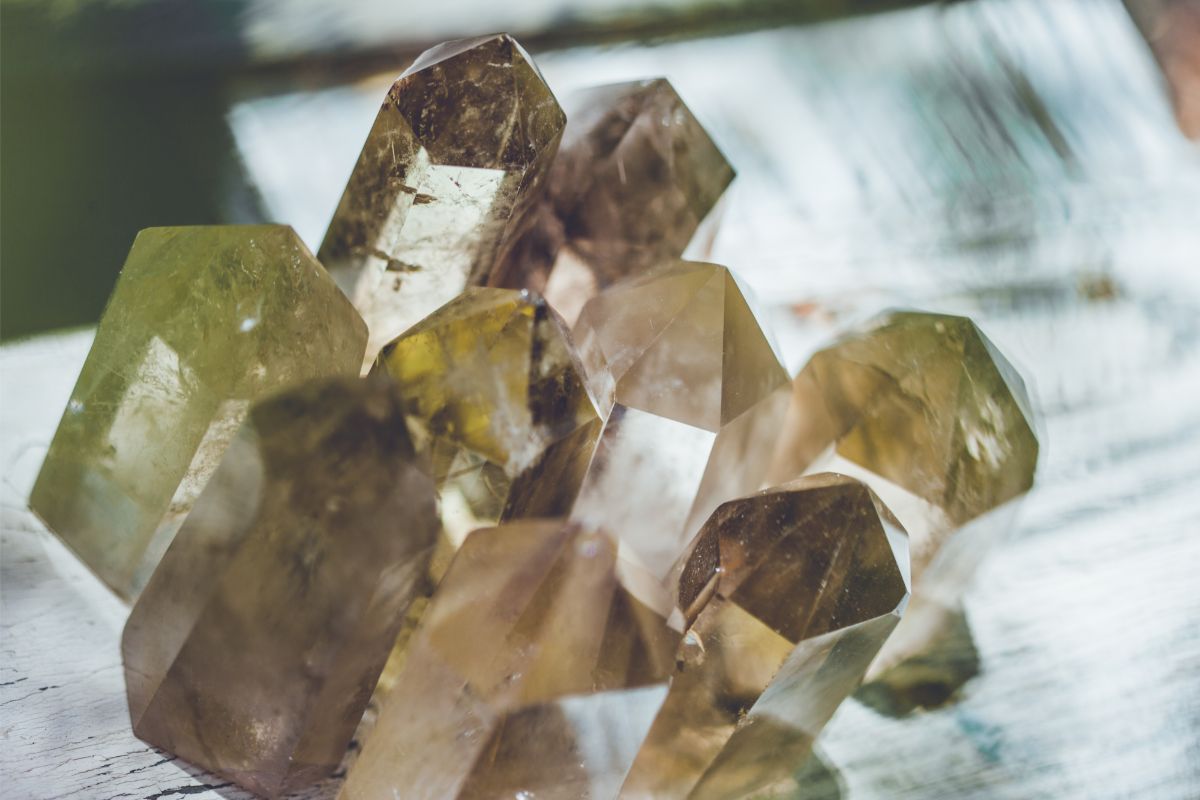
Smoky quartz, on the other hand, is completely different from lapis lazuli. It is a brownish-gray crystal that is said to contain powerful properties.
With this in mind, this guide will explore everything you need to know about lapis lazuli and how they may be more similar than you may think.
Let’s get started.
What Is Lapis Lazuli?
Otherwise known simply as Lapis, lapis lazuli translates directly to ‘blue stone’. In fact, it comes from the Latin word ‘lapis’ which means ‘stone’, as well as the Persian lazhward translation for ‘blue’.
Inside the crystal’s structure, you’ll find stunning shades of deep and rich blue. Plus, you will also find golden flecks running throughout, giving it a mysterious and magical charm.
Lapis lazuli has been used for thousands of years by Ancient Egyptians. In fact, it is even believed that Michelangelo used the crushed up stone to paint the frescoes in the Sistine Chapel.
The mystical appearance of the stone has drawn the attention of seers and intrigued scholars since ancient times – thanks to the stone’s compelling energies.
Over the years, the stone has even found its way into the hands of faith healers. Plus, since civilization came to be, the stone has been known for its calming and soothing influence to help calm the senses and open the mind.
Even today, its popularity cannot be underestimated. It is mined in Italy, the USA, Afghanistan, and Chile.
Lapis Lazuli Properties
In addition to lazurite, lapis is also known to contain pyrite and calcite. Other minerals that may be present include hauyne, sodalite, mica, afghanite, diopside, and dolomite.
To be referred to as ‘lapis lazuli’, the stone must contain at least 25% blue lazurite and have a distinct blue color.
The second most abundant mineral found in lapis is calcite. In fact, it makes it very obvious by displaying fractures, white layers, or mottling.
It can even be intermixed with lazurite to create a rock that features a faded denim color.
Pyrite, on the other hand, can usually be found in tiny, randomly spaced grains with contrasting gold shimmers.
When found in abundance, the grains can be intergrown or concentrated into patches or layers. This can occur as a fracture-filing mineral.
As a whole, lapis lazuli is made up of several minerals, each featuring its own cleavage/ fracture characteristics, hardness, color, and specific gravity.
For calcite, the hardness on the Mohs scale ranges from 3, whereas for pyrite, it ranges from 6.5. The hardness is dependent on where you’re testing it.
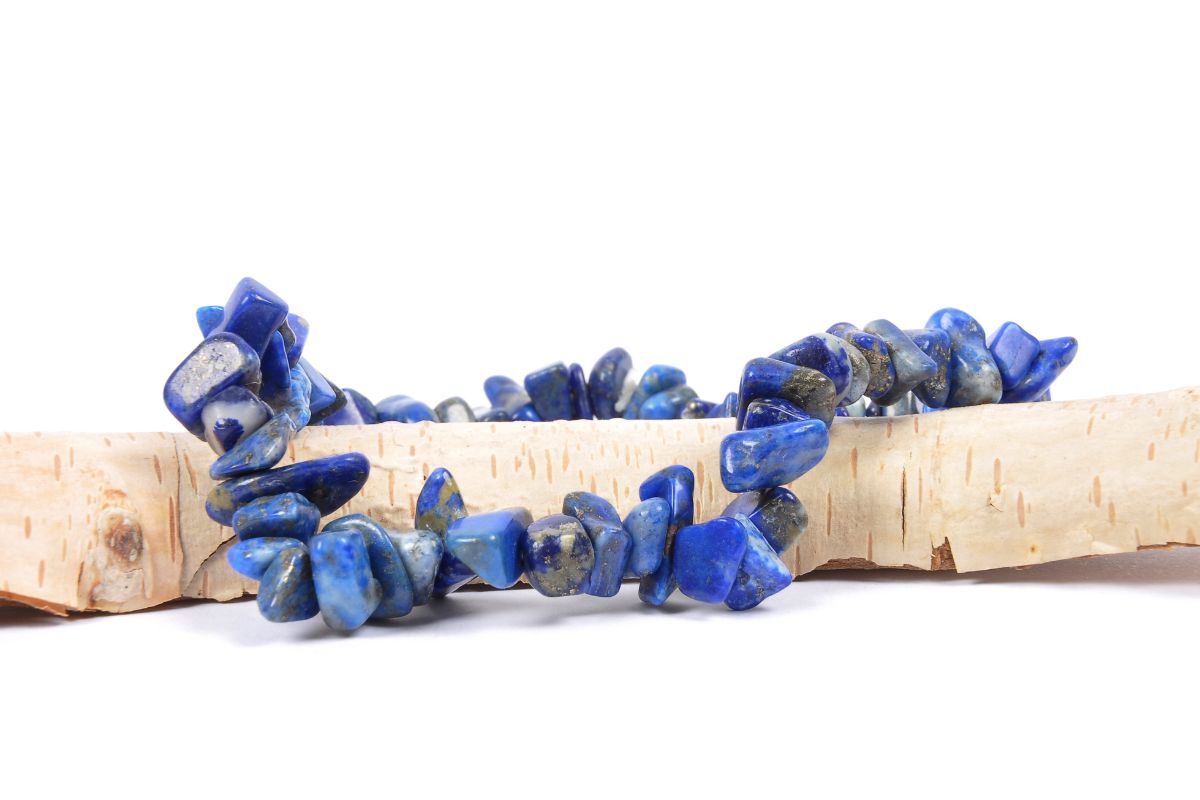
Lapis Lazuli Uses
Due to its durability issues, lapis lazuli isn’t suitable for specific applications. Since it has a Mohs hardness of approximately 5, it makes it a very soft material for cufflinks, bracelets, or rings.
This is especially true if the stone is resting on top of the bezel or the setting where it is more likely to show signs of abrasion.
Therefore, lapis is best used in pins, earrings, and pedants, where the chances of abrasion are less likely.
When stored in jewelry or as unmounted stones, the lapis can become damaged if they are not isolated from one another.
Hence, it is best stored in separate bags or boxes. You can even opt for separate compartments for each item.
You should always store loose-cut stones in bags, papers, or gem containers to prevent the stones from abrading and rubbing up against one another.
What Is Smoky Quartz?
Smoky quartz is a type of crystalline mineral quartz. What creates this stone’s smoky appearance are trace elements of aluminum and lithium which become trapped in the crystal as it hardens.
The stone itself is one of the most underrated crystals with not many people drawn to it due to its seemling ‘ugly’ surface.
Smoky Quartz Properties
Despite its lack of popularity, smoky quartz is a very powerful stone. It is said to emit strong protective energy – helping the user to ground themselves and is great for working with lower Chakras.
In fact, it is one of the best crystals for transmitting and absorbing negative energies. Plus, it is great for pain relief, too.
Even though this stone has slow and solid energy, it remains extremely strong in its action.
For instance, the stone can help facilitate meditation, making it great for deepening the mental state and heightening awareness, while removing negative energies from your aura and keeping you centered at the same time.
The stone can also help integrate messages and spiritual energy from other dimensions by transporting them into the physical form.
For those with cancer, this stone can be a great treatment for helping with radiation-related illnesses that are caused by the treatment.
Plus, it has a great reputation when it comes to general detoxification, too.
Smoky Quartz And Lapis Lazuli Combined
When the two stones are combined, the protective qualities of lapis lazuli are finished thanks to the internal purge of negativity found within you.
By interacting with negative and envious thoughts from others, it is very likely that we have our own negativity that needs dealing with. This stone helps to combat this.
Final Thoughts
Lapis Lazuli and Smoky Quartz are two completely different stones based on appearance. For instance, one features a vivid blue color while the other is dark and mysterious.
However, when you combine these two stones together, you’re awarded something special. Essentially, it is a powerful combination when combating negativity in your life.
Hopefully, this guide has informed you on everything you need to know about lapis lazuli and smoky quartz.
- 15 Crystals That Cannot Be Exposed To The Sun - January 7, 2024
- Malachite Vs Fuchsite – Benefits And Uses - January 7, 2024
- Malachite Vs. Green Jasper: Benefits And Uses - January 7, 2024

